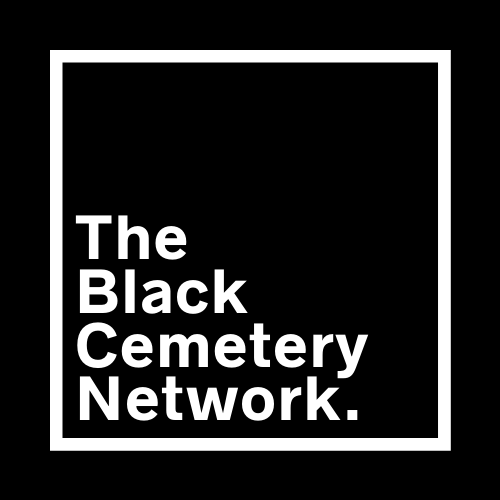SITE DIRECTORY
To learn more about any of the BCN sites listed below, click “Read more” to view individual site briefs. To search for a specific BCN site, use the search bar below:
Forrest City Colored Cemetery
FORREST CITY COLORED CEMETERY
FOUNDED: Unknown
ADDITONAL NAMES: Purifoy Cemetery
AFFILIATION(S):
St. Francis County Historical Society
HISTORY:
The Forrest City Colored Cemetery is a long forgotten African American Cemetery were several prominent black leaders and politicians are laid to rest. For example, JH Blount (the first Black Governale candidate), Wallace Purifoy (Black and Tan party), and Dr. RA Williams (founder of Supreme Royal Circle of Friends of the World). This cemetery has been forgotten. As well as the significant historical beacons buried here.
BCN Contact Information:
Angela Wilburn
wilburna2015@gmail.com
Cypress Grove Cemetery
CYPRESS GROVE CEMETERY
FOUNDED: 1840s
ADDITONAL NAMES: Hollywood Plantation, Valley Farm, Taylor Cemetery
AFFILIATION(S):
Arkansas Archeology Survey
HISTORY:
The Cypress Grove Cemetery is located on what was once the Hollywood Plantation, established during the 1840s by Dr. Jonathan Martin Taylor. At its peak, the plantation covered over 10,000 acres with 83 enslaved Black laborers. According to oral history, after Abraham Lincoln issued his Emancipation Proclamation in 1862, Taylor ordered that the slaves working on the Hollywood Plantation be freed. Some stayed on as hired servants to the remaining Taylor descendants, some traveled north with the help of Taylor and his resources, and others made homes elsewhere in southeastern Arkansas.
The Cypress Grove Cemetery was used for at least two decades into the twentieth century and shows evidence that local Black families belonged to fraternal organizations during that time. Two of the gravestones state that those buried beneath them were members of the Lily of the Valley Chapter 1007 of the Mosaic Templars of Winchester. Another gravestone states that its owner was a member of the Sweet Home Chamber 2620. Membership in such fraternal organizations offered insurance for grave markers and burial plots—which African Americans had no control over during slavery. This Black cemetery is one of many in southeastern Arkansas, which still has a large Black population today.
BCN Contact Information:
Dr. Matthew P. Rooney
mr096@uark.edu
New Gascony
NEW GASCONY CEMETERY
FOUNDED: 1910
ADDITONAL NAMES: None
AFFILIATION(S):
Pine Bluff Historical Society
Arkansas Archeological Survey of UAPB
HISTORY:
The cemetery does not appear on the 1905 map but does appear on the 1935 map. I do not know when it was established. The oldest burial found was 1915. The most recent burial was in 1972. The cemetery fell out of use soon after that as the community around it migrated away. Many moving north to Chicago. The stones found so far are very spread out, but mostly intact. There is very little damage to be found on each one so far. A few aluminum grave markers have been found, but no names or dates could be seen on them. There are plenty of grave depressions. There is even one grave enclosed with fencing, but I could not find a head stone for it. The cemetery is lined with tall trees and covered in vines. The cemetery is surrounded by row crop fields that vary between corn, soybean, and cotton. The area of the cemetery has been left to itself, unattended or molested.
New Gascony was founded in the 1800’s by a Frenchman. He named the town for his home of Gascony, France. There was an attempt made to have it be made the county seat. It was the county seat for a short time before reverting back to Pine Bluff. New Gascony was a popular stop for boats going down the Arkansas River, having it’s own dock. The mail route came through here from an early time in the county. It was even included on most train schedules in the area. A Mr. John Gracie was a large land holder, owning most of New Gascony. At times the town is referred to as Gracie. This town included a few churches, school houses, saloon, post office, corner store, and a few cemeteries. Several homes lined the streets at some point too. During the time of Mr. Gracie several Italian immigrants came to the area to work on the land as tenant farmers. They established a catholic church and cemetery not far from the New Gascony Cemetery. The catholic cemetery was used for the white Catholics of the are, while the New Gascony Cemetery was for the blacks (often Baptist). I think there was a Baptist church across from the cemetery at one point, but I can’t be sure yet. The area produced many crops and families over the years. But with the strong ties to slavery, rasicm never left the area. Black farmers were pushed off their own land, through dubiously legal means. Pine Bluff was often a site for KKK meetings and marches. The black community lessened and lessened until they were pretty much gone. The land that use to hold homes turned over to fields and trees. Old houses were often burned down or striped down for parts. A few blank spots remain as a reminder of what use to be. Very few people know of the cemetery now. Or if they know of it, they know only that it exists.
BCN Contact Information:
Michele Jones
michelethmpsn527@gmail.com




